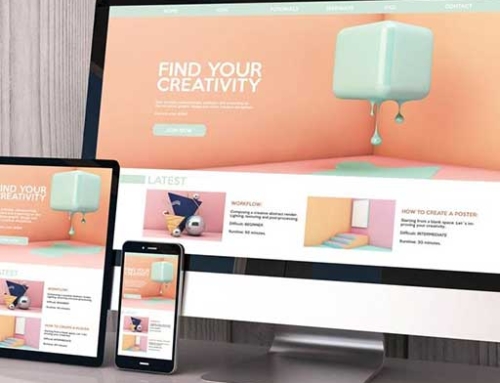As user experience (UX) design evolves, data plays an increasingly significant role in informing design decisions. In 2023, data-driven UX design is more critical than ever as companies strive to create products and services that meet users’ needs and preferences. By collecting and analyzing user data, UX designers can gain valuable insights into users’ behavior, preferences, and pain points. This information can then be used to inform design decisions, improve user experience, and increase business growth. In this article, we’ll explore how to use data to inform your UX design in 2023, including best practices for collecting and analyzing user data, applying data-driven insights to UX design, future trends in data-driven UX design, and more.
Understanding the Importance of Data in UX Design
In UX design, data plays a crucial role in ensuring that designs are functional, intuitive and effective. By collecting and analyzing user data during the design process, designers can identify user patterns, preferences and pain points which can then be used to inform design decisions. User testing and analytics tools enable designers to understand how users interact with a product or service. This allows them to make informed decisions about layout, functionality and content. The use of data in UX design eliminates subjective assumptions by providing empirical evidence of how users interact with designs. Furthermore, this approach enables designers to create solutions that meet the needs of their target audience rather than designing based on personal opinions or anecdotal experience.
Why Data is Critical to UX Design
Data has become an essential tool for UX designers to create meaningful and effective digital experiences. By analyzing user data, designers can gain insights into user behaviors, preferences, and pain points. This information can then be used to make data-driven design decisions that improve usability, engagement, and overall user satisfaction.
The Role of Data in User Research
Data plays a critical role in user research, which is an essential part of the UX design process. Through quantitative and qualitative data collection methods, such as surveys, interviews, and user testing, designers can gather valuable information about user behaviors and preferences. User research also helps designers identify opportunities for improvement and validate design decisions.

The Benefits of Data-Driven UX Design
Data-driven UX design has several advantages over traditional design methods. It allows designers to make informed design decisions based on evidence rather than assumptions, leading to better usability and more effective digital experiences. Data-driven design also helps to support a user-centered design approach, which ensures that the needs and preferences of users are at the forefront of the design process.
Collecting User Data: Best Practices and Tools
Collecting user data is crucial for businesses to understand their users and improve their offerings. However, collecting user data must comply with privacy laws and ethical considerations. Best practices include informing users about what data you are gathering, why you need it and how it will be used by providing a clear privacy policy. It’s imperative to give users the option to opt-out of certain types of data collection like cookies or mobile location tracking. Data should be accurate, relevant, up-to-date and not excessive in amount – where these principles can help minimize potential risk to consumers’ privacy rights as well as legal implications in sensitive contexts such as the healthcare or finance industries. For this reason, using tools such as encryption, access controls, and audit trails can ensure the security of collected information. This leads ultimately towards better overall customer satisfaction while avoiding scandals over mishandling sensitive personal information that might lead to reputational damage of organizations.

Best Practices for Ethical Data Collection
Ethical data collection is of importance to guarantee the respect and protection of user privacy. Designers must obtain informed consent from participants, maintain data security, and collect only the necessary data for research objectives. Additionally, designers must be transparent about the data collection process and provide participants with clear information about how their data will be utilized.
Ensuring ethical data collection practices is not only a moral obligation but also a legal requirement. Failure to comply with professional standards can result in legal consequences and damage to a company’s reputation. Therefore, designers must prioritize ethical data collection in their work.
To obtain informed consent, designers should clearly explain the purpose of the research and the data collected. Participants should have the option to decline participation or withdraw consent at any time. Data security measures should also be implemented to protect the confidentiality and integrity of collected data.
Choosing the Right Data Collection Methods
Selecting appropriate data collection methods is crucial to guarantee the relevance and accuracy of the collected data. The most suitable method depends on the research objectives, the intended audience, and the necessary data. Different data collection methods include surveys, interviews, focus groups, and experiments. It is important to consider the advantages and disadvantages of each method, as well as the cost implications, before deciding on an appropriate data collection method.
Analyzing User Data for UX Insights
Analyzing user data is crucial to providing valuable UX insights. By examining user behavior and feedback, designers can understand how users interact with their product. They can also learn what issues they encounter and what improvements may be necessary. This data-driven approach enables designers to make informed decisions that increase user engagement and satisfaction while decreasing churn rates. The use of various analytical tools can provide valuable information such as conversion rates, bounce rates, heat maps, and usability scores. By analyzing this data accurately and effectively, designers can create a product that meets the needs of their target audience and outperforms competitors in the market. Overall, incorporating UX insights from analyzing user data into the design process ensures a better experience for users and increases the chances of long-term success for the product or service.
Applying Data-Driven Insights to UX Design
Applying data-driven insights to UX design is becoming increasingly relevant in the modern digital landscape. By utilizing data analysis tools and techniques, designers can gain deep insights into user behavior and preferences, enabling them to create more effective and intuitive products. This approach involves continuously gathering user feedback and performance metrics, which can then be analyzed to identify patterns and trends that inform the design process. These insights may include information on how users interact with certain elements of a product, what features they find most useful or engaging, as well as any pain points or usability issues that need addressing. By leveraging these insights in the design process, developers can create products that are tailored not only to specific user needs but also optimized for maximum impact and engagement. Ultimately, applying data-driven insights to UX design supports the creation of more innovative and successful products that meet user demands while delivering value for businesses.
How to Use Data to Inform UX Design Decisions
Designers can leverage data to make informed design decisions by identifying user needs, preferences, and pain points. This valuable information can then be utilized to create user-centered design solutions that are both effective and enjoyable to use. Additionally, data can be used to validate design decisions and pinpoint areas for improvement. By incorporating data into the design process, designers can ensure that their solutions are not only aesthetically pleasing but also meet the needs of their target audience.
Integrating Data into the UX Design Process
Integrating data into the UX design process is crucial to ensure that design decisions are based on evidence rather than assumptions. Data should be collected and analyzed throughout the design process to validate design decisions and ensure that the final product meets user needs.

Creating User Personas Based on Data Insights
User personas are fictional representations of users that help designers understand user needs, behaviors, and goals. Data insights can be used to create more accurate and effective user personas, which can then be used to inform design decisions. By incorporating data into the user persona creation process, designers can ensure that their designs are more user-centered and effective.
Future Trends in Data-Driven UX Design
As we move into the year 2023, data-driven UX design will continue to play a crucial role in creating engaging and effective digital experiences. Some of the emerging trends that we can expect to see include the incorporation of AI and machine learning, the use of virtual and augmented reality, and the increasing importance of personalized experiences.
Emerging Technologies and Their Impact on Data-Driven UX Design
AI and machine learning will allow for more advanced user segmentation and the ability to create personalized experiences based on user behavior. Virtual and augmented reality will provide new opportunities for immersive experiences and sophisticated data collection. These technologies will all require data-driven design approaches to effectively implement.

The Future of Data Collection and Analysis Techniques
As data collection and analysis techniques continue to evolve, we can expect to see a shift towards more real-time data collection and analysis. This will enable UX designers to quickly iterate and optimize their designs based on user behavior. Additionally, we can expect to see an increased focus on qualitative data collection techniques such as user interviews and usability testing alongside quantitative data collection methods.
How Data Will Shape UX Design in the Coming Years
Ultimately, data will continue to play a critical role in shaping UX design in the coming years. As we gain new insights into user behavior and preferences, UX designers will be able to create more effective and engaging digital experiences that meet the needs of their target audience.
Challenges and Limitations of Data-Driven UX Design
While data-driven UX design has many benefits, it is not without its challenges and limitations. Gathering user data can be costly, time-consuming and difficult. Also, data does not always tell the complete story. It may be difficult to interpret user behavior from the data alone, as there may be many other factors influencing user behavior.
Common Challenges in Data Collection and Analysis
Common challenges include data privacy concerns, data accuracy and reliability, and the difficulty of interpreting and making decisions based on complex data sets. It’s important to recognize that data-driven UX design is not a silver bullet solution. Designers must balance data insights with their own creativity and intuition to create truly innovative and unique experiences.
To overcome these challenges and limitations, it’s important to approach data-driven UX design with a critical and thoughtful mindset. This includes focusing on quality over quantity when it comes to data collection, collaborating with data professionals, and understanding the limitations of data-driven design.
Measuring the Success of Data-Driven UX Design
To measure data-driven UX design success, it’s key to focus on meaningful metrics and KPIs. These metrics should be contextualized to the product and its goals, and should aim to provide meaningful insights into user behavior. Constant monitoring and analysis of these metrics are also important to ensure that the UX design remains effective over time.
How to Define and Measure Success in Data-Driven UX Design
Defining and measuring success requires a clear understanding of design goals and user needs. Success can be measured through metrics such as user engagement, conversion rates, and customer satisfaction. Key performance indicators for data-driven UX design may include metrics related to user behavior, such as bounce rate, time on site, and click-through rate.
Measuring the ROI of Data-Driven UX Design
Measuring the return on investment of data-driven UX design requires taking into account both quantitative and qualitative metrics, as well as the impact of design on business goals such as customer retention and revenue growth. By collecting and analyzing user data, UX designers can gain valuable insights that inform design decisions and improve the user experience. As technology continues to evolve, data-driven UX design will only become more important. By following best practices and staying up-to-date on emerging trends, UX designers can create products and services that meet the needs and preferences of users while driving business growth.

FAQ: Using Data in UX Design
To effectively measure the success of data-driven UX design, it’s important to define key performance indicators (KPIs) that align with your business goals. These KPIs might include metrics like user engagement, conversion rates, and customer satisfaction. By regularly tracking and analyzing these metrics, you can gain valuable insights into the impact of your data-driven UX design efforts.
Some future trends in data-driven UX design include the use of artificial intelligence and machine learning to analyze user data, the integration of data insights into the design process in real-time, and the use of virtual and augmented reality to collect and analyze user data.
Some common challenges in data-driven UX design include collecting accurate and relevant data, analyzing data effectively, and translating data insights into actionable design decisions. Additionally, data privacy and ethical considerations must be taken into account when collecting and using user data.
Data is important in UX design because it provides designers with valuable insights into users’ behavior, preferences, and pain points. By analyzing user data, designers can create more effective user experiences that meet the needs and expectations of their target audience.
At ThisGals, we pride ourselves on staying ahead of the curve when it comes to the latest trends and technologies. We understand that keeping up with the ever-evolving landscape of the industry can be overwhelming, which is why we offer our expertise to you.
We invite you to schedule a consultation with us today to discover how we can help you achieve your goals. Our team of professionals is dedicated to providing you with the most innovative solutions that will take your business to the next level.









